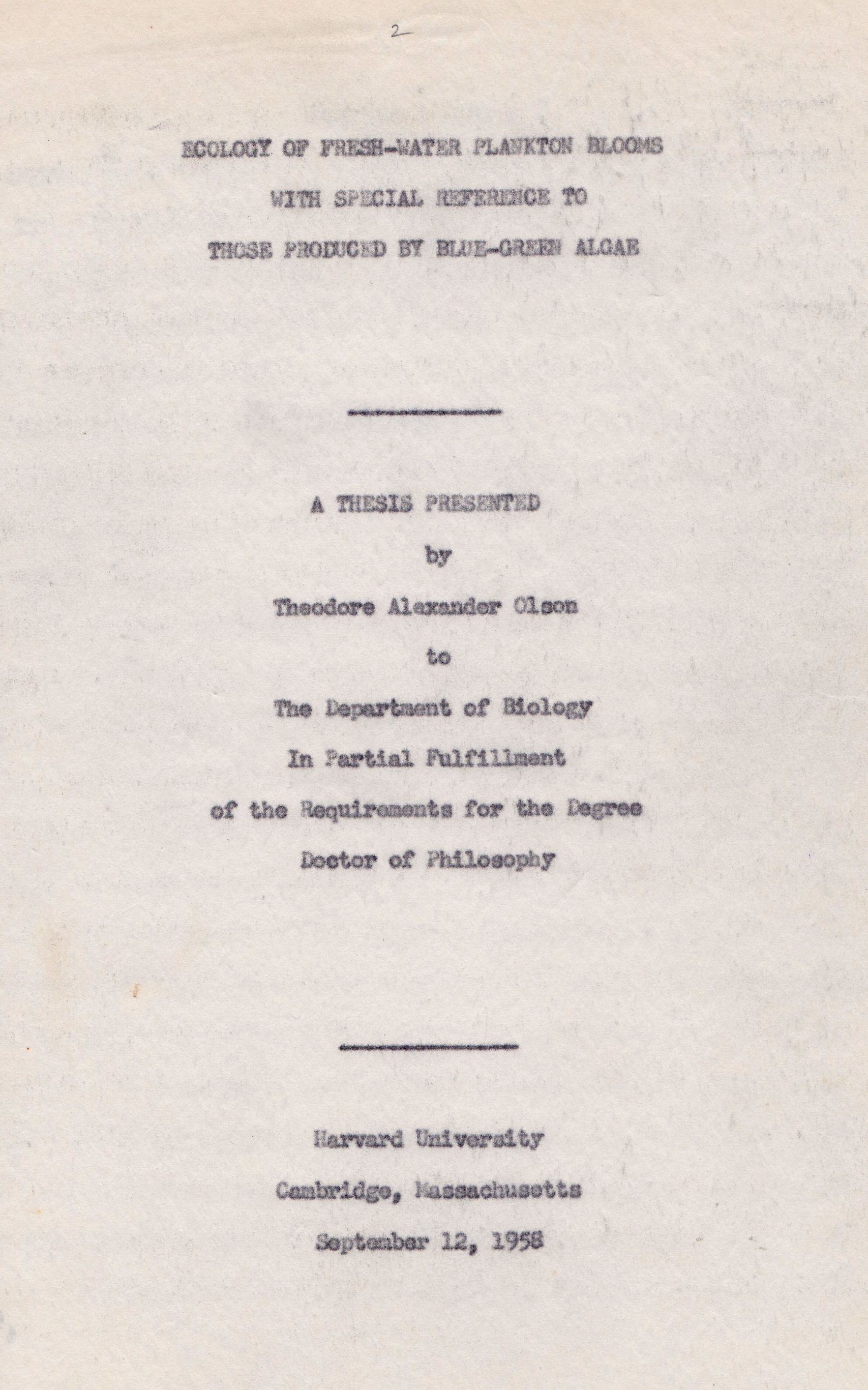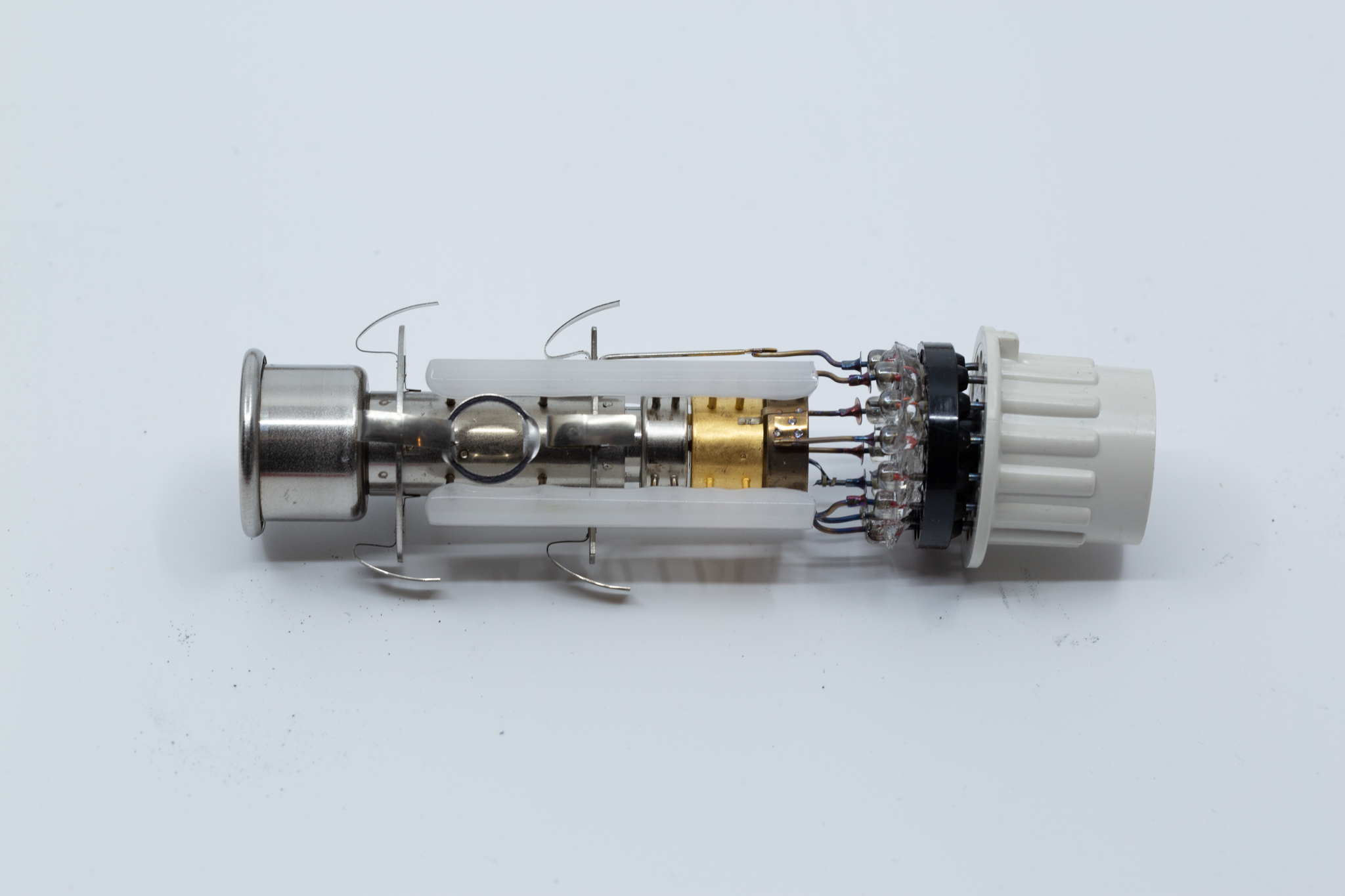
“Long before the term ecology became a part of the vocabulary of the scientist, primitive man, looking out over the expanse of blue-green water which characterized his favorite fishing haunt, was probably aware of the fact that notable alterations in the color and clarity of this body of water would occur as the seasons changed.”
The introductory sentence of Theodore Olson’s PhD thesis on algae blooms.
I was witness to my grandparents’ transition to an assisted living apartment from the home they had kept for more than half a century. Though modest, it was the center of a busy family’s activities, and had accumulated the corresponding mementos through the decades. It had also collected the technical artifacts of my grandfather’s scientific career, specimens of insects and fish and algae from his ecological and entomologist specialties. He kept copies of his and his peers’ published works, along with those of his doctoral students, who carried on these disciplines, with the scientific rigor and methods that he taught them over their years in his tutelage.
I was there on the day when he had to empty the ‘wall of books‘ in his home library, which included the dissertations of his students. There was no space for everything at the new apartment. A few important reference volumes could be retained, but the others? What to do with them? Here were the compiled and distilled understandings of pioneers in biology, acquired through years of painstaking research, building upon the pyramid of human knowledge. These breakthroughs of their time have now been incorporated into our general understanding of modern biology.
What should happen to the first-ever photomicrographs of blue-green algae blooming to produce cyanobacterial toxins? What should become of the tabulated counts of seasonal species of mosquitos that were the vectors of mosquito-borne diseases? What should be the fate of that first chart correlating taconite processing and asbestos-like fibers in Lake Superior? All of these new discoveries had been first reported in his research and in the dissertations of his PhD students.
Continue reading
